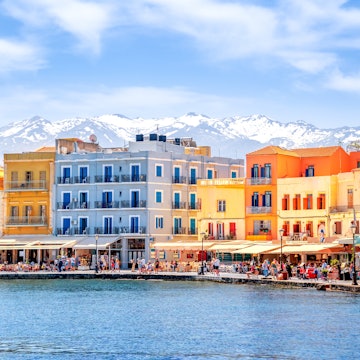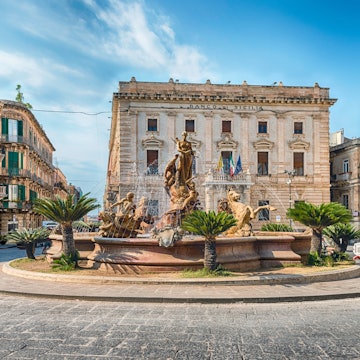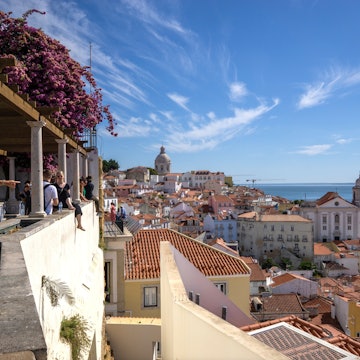
The 13 best things to do in Liverpool



Historic and modern architecture mingles on Liverpool's famous waterfront. Andrea Pistolesi/Getty Images
A grand city on a grand river, Liverpool was once a thriving home for industry and maritime trade before postwar decline set in. Today, with a rejuvenated waterfront, the birthplace of The Beatles radiates a friendly vibe that adds warmth to its wealth of excellent attractions. Most visitors agree that it's one of the best places to visit in England.
From the splendor of Pier Head and Sefton Park to the passion of its two famous football teams and the rhythms of onetime Beatles’ haunt, the Cavern Club, Liverpool is a pulsating city that doesn’t take itself too seriously. It’s home to gregarious characters too, so take the time to chat and laugh with locals in Liverpool’s abundant, vibrant watering holes.
Yes, the legacy of Liverpool's fine architecture lies partially in the part the city played in the slave trade, but the city authorities are making efforts to acknowledge this dark side to history with poignant displays at the International Slavery Museum.
From taking a Beatles pilgrimage to going football crazy at Anfield football stadium, here are the very best things to do in Liverpool.
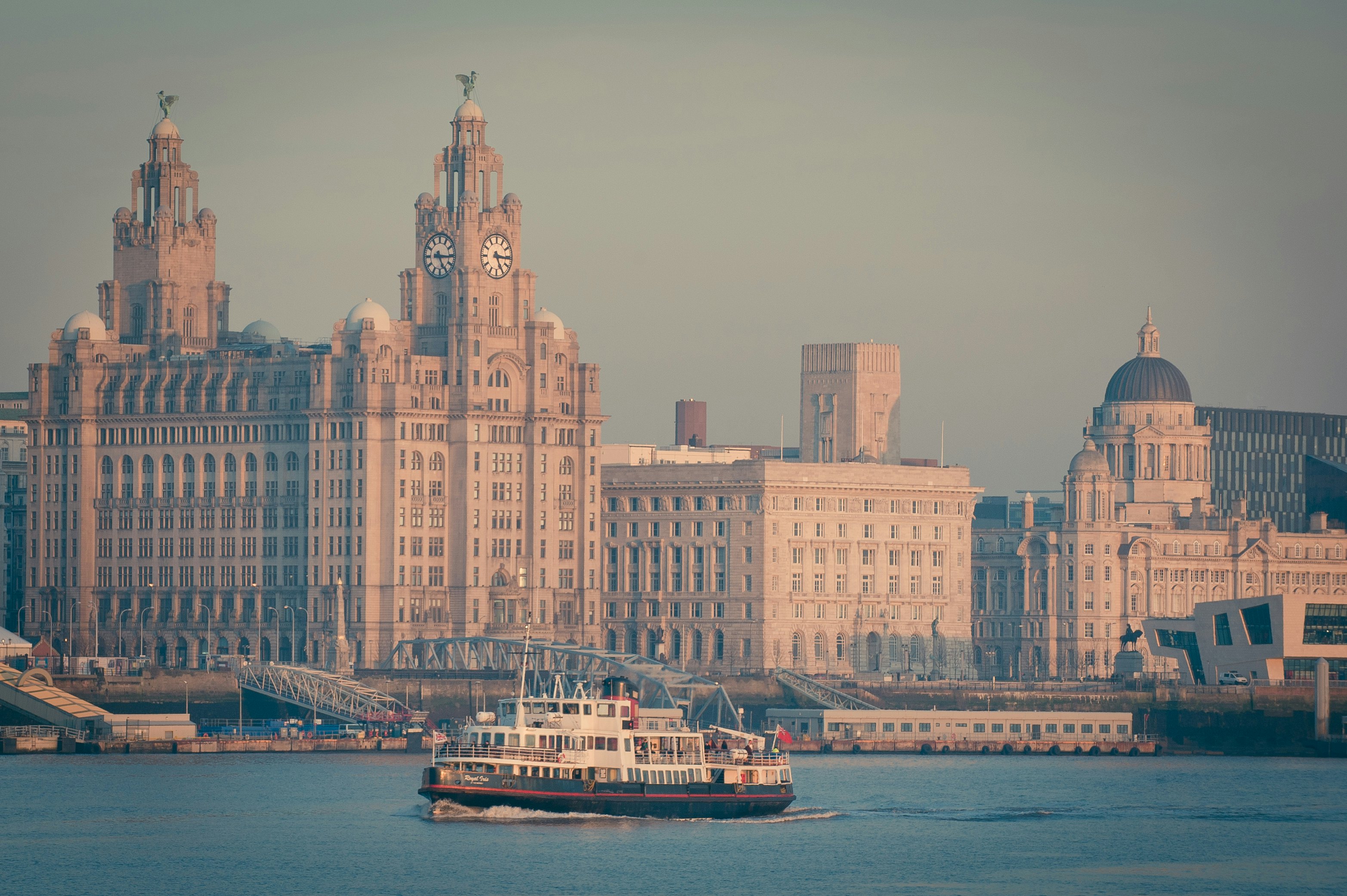
1. Cross the River Mersey in the best way possible
You’ve probably already heard the Gerry and the Pacemakers song, Ferry Cross the Mersey, and if you want to see Liverpool’s famous skyline in all its glory, then there’s no better way to do it than by taking the ferry ’cross the Mersey.
Head down to the ferry terminal at Pier Head and choose the Mersey Ferries River Explorer cruise, where, along with the great views, you’ll also get an expert commentary throughout the 50-minute journey pointing out less-heralded sights, such as the multi-clock-faced Victoria Tower and the imposing Wallasey Town Hall.
Planning tip: Try to take the ride when there are no gigantic cruise ships in the port obscuring the skyline views.
2. Admire Liverpool's iconic architecture
Second only to London for having the most listed buildings in the UK, Liverpool is renowned for its striking architecture. With the city’s well-documented economic struggles during the 1970s and 1980s, it’s easy to forget how powerful Liverpool once was when it was a booming port with trade money flowing in from across the British Empire.
Architecture fans should start with the stunning Three Graces – the Royal Liver Building with its two mystical Liver Birds and enormous clockfaces, plus the Cunard Building and the Port of Liverpool Building – rising like three concrete sentinels next to each other on the waterfront at Pier Head.
Then there are Liverpool's twin cathedrals – the futuristic Catholic Liverpool Metropolitan Cathedral and the Gothic Revival Anglican Liverpool Cathedral. If you’ve just arrived by train at Liverpool Lime Street Station (impressive in itself), check out nearby neoclassical marvels such as the World Museum, a powerhouse of culture and history dating from 1853.
Planning tip: Architecture tours run by the Royal Institute of British Architects will get you deeper under the surface of the city's rich architectural heritage.

3. Discover a cathedral with a secret
Known locally by the nickname "Paddy’s Wigwam," Liverpool Metropolitan Cathedral was built for the city’s large Catholic community in the 1960s and it's one of Liverpool’s most distinct buildings. While the outside is eye-catching due to its conical shape, it’s well worth going inside to view the interiors.
The cathedral is bathed in color from the stained-glass windows, and the circular seating set-up with the altar in the center creates a unique atmosphere. Even more fascinating is the mysterious Lutyens Crypt downstairs, a relic from architect Edwin Lutyens's plans to build the world’s second-largest cathedral after St Peter’s Basilica in Rome on this site, before the idea was scuppered by WWII.
Planning tip: Join a free guided tour (donations appreciated) to learn more about the history of this remarkable piece of modern architecture.
4. Sample the Baltic Triangle’s breweries & bierkellers
With the city's enormous Gothic-Revival Anglican Cathedral looming over its graffiti-splashed streets, the so-called Baltic Triangle looks like nowhere else in Liverpool. Taking its name from the historic trade between local merchants and the Baltic nations, this modern-day hub of creativity is a great place to raise a glass, too.
Love Lane Brewery and Black Lodge Brewing are cool, airy spaces, pouring fine craft beer, though they’re merely the hors d’oeuvres to the wealth of buzzing bars inside the pedestrianized Cains Brewery Village. The massive bierkeller-esque Boxpark Liverpool is a gaudy and expansive spot to watch live sport, while Camp and Furnace put on some seriously fun events.
Don’t leave the Baltic Triangle without stepping downstairs into the weird and wonderful Hobo Kiosk on Jamaica St; with eclectic decor and gregarious owners, this downstairs beer bar guarantees good times.
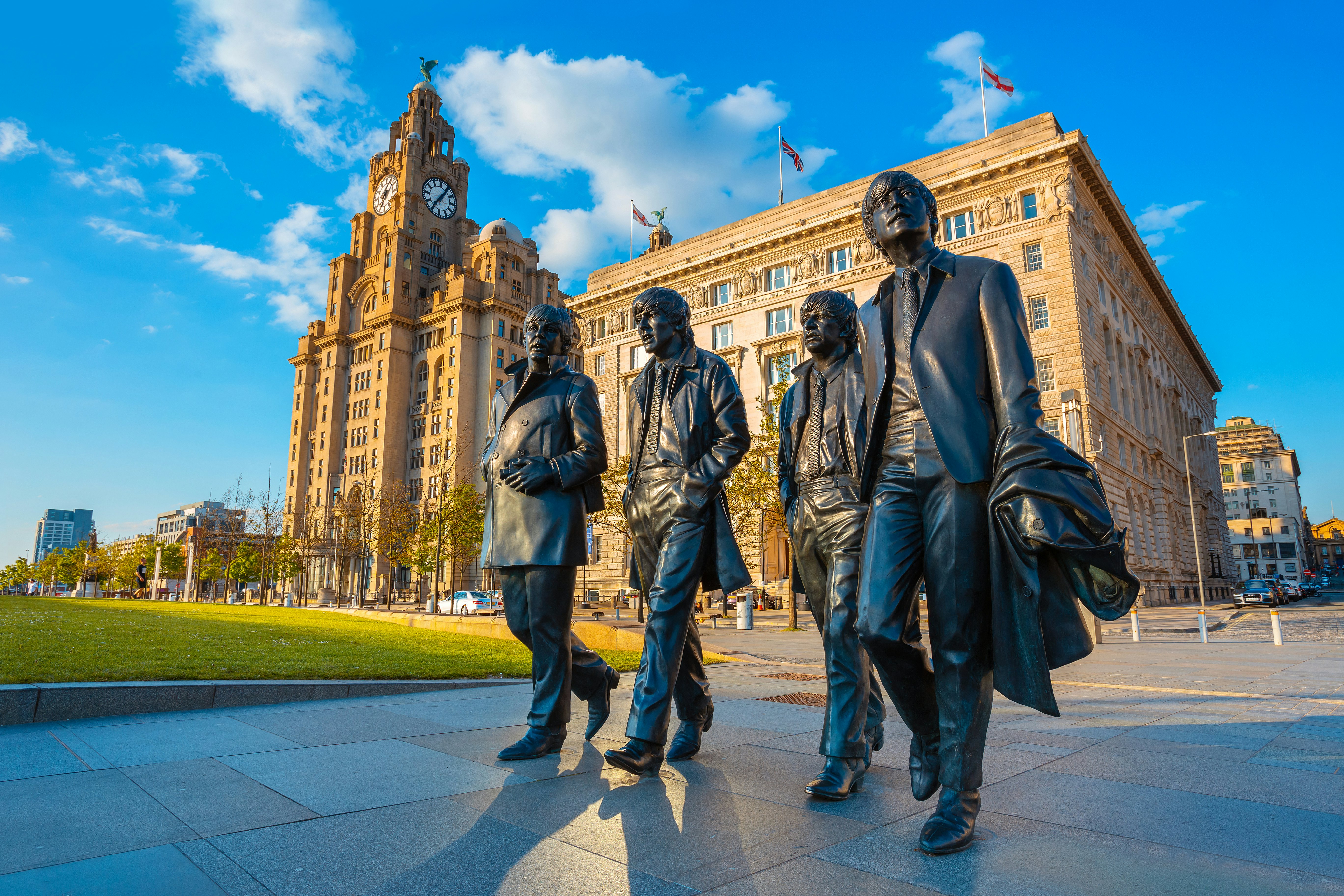
5. Follow in the footsteps of Liverpool’s Fab Four
Throughout the 1960s, The Beatles were a musical and cultural phenomenon, and their legacy lingers to this day. From early hits such as She Loves You to groundbreaking albums like Sgt. Pepper’s Lonely Hearts Club Band, the Liverpool band sold millions of records before their split in 1970.
If you want to learn more about the band, The Beatles Story at the Royal Albert Dock offers a good introduction to the Fab Four, with genuine memorabilia including George Harrison’s first guitar and John Lennon’s last piano. Stroll north along Pier Head and grab a selfie with the statue of the band in front of the Cunard Building.
Beyond the city center, you can visit the suburban childhood homes of John Lennon and Paul McCartney, administered today by the National Trust, or go for a stroll down the real Penny Lane that inspired the whimsical 1967 song (resist the urge to photograph the street sign on the corner; the original sign is further up the road).
Possibly the biggest attraction of them all, the Casbah Coffee Club is where The Beatles played their very first gig in 1959 and its basement is open for tours, though you’ll need to book ahead via the phone number on the website.
And a night of singing and dancing at the legendary Cavern Club – where the band played almost 300 concerts – is a rite of passage for Beatles aficionados. As well as hosting visiting talent, the venue has a resident Beatles covers band.
Planning tip: Numerous operators run Beatles tours of the city – the Cavern Club's popular Magical Mystery Tours visit Fab Four sights around the city in a colorful bus.
6. See the latest musical talent at iconic Liverpool venues
Music seeps from Liverpool’s pores, from the phenomenal back catalog of The Beatles to the diverse creativity of Elvis Costello, Echo & the Bunnymen and Frankie Goes to Hollywood, so be sure to take in a gig while you’re here (and no, hearing a busker singing Yesterday doesn’t count).
Start with The Jacaranda, whose grungy basement was the site of one of the Fab Four's first performances; this landmark venue has hosted everyone from Gerry and the Pacemakers to The Libertines. Further north, the multidisciplinary Invisible Wind Factory features jazz, drum’n’bass, hip hop and more.
Over in the Baltic Triangle, Content was constructed from repurposed materials and reclaimed shipping containers and has hosted big indie acts like Fontaines DC and The Vaccines. For good-time sing-alongs, don’t miss a gig at the Cavern Club, which hosted The Beatles 292 times.
The handsome Cunard Building was once the headquarters of the Cunard shipping company, but it’s now home to the British Music Experience – a fitting location, as the American crews of these transatlantic cruisers were credited with bringing the first blues records to the UK. Inside, the museum is stuffed with memorabilia covering every era of British rock and pop, from David Bowie’s multicolored Ziggy Stardust costumes to Noel Gallagher’s iconic Union Jack guitar.
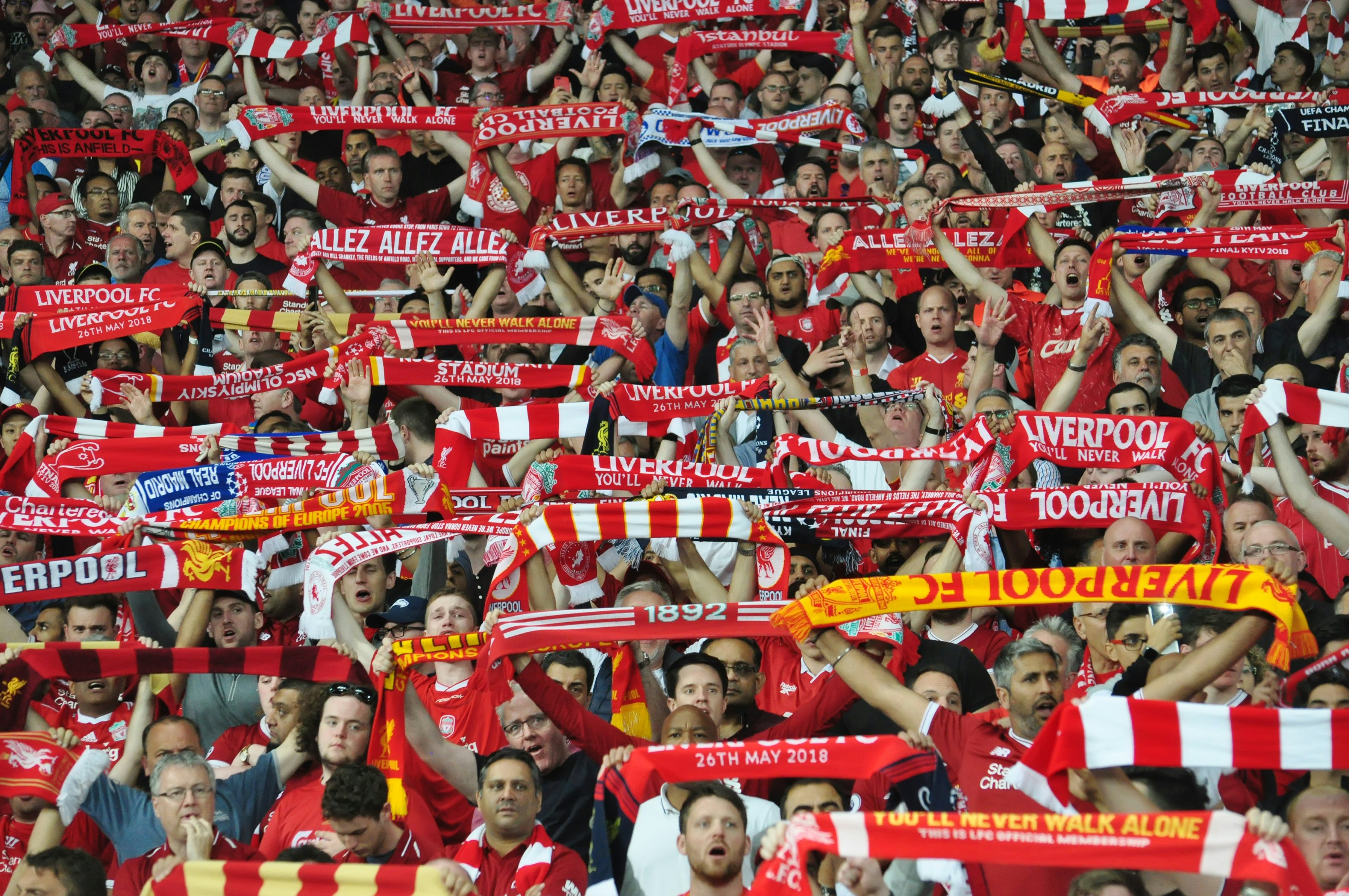
7. Feel the passion for Liverpool Football Club
Whether it’s the murals of recent manager Jurgen Klopp dotting the streets or the racks of bright red football scarves on sale across the city, the passion for Liverpool Football Club is inescapable in this city. Not for nothing did legendary 1960s manager Bill Shankly once say, "Some people believe football is a matter of life and death. I can assure you it is much, much more important than that."
Just a 15-minute bus ride from the city center is Anfield Stadium, the flag-waving, scarf-raising church where the team plays. Attending a game can be pricy, and getting a ticket isn't always easy; the easiest way to secure one is to book a hospitality package or try your luck through the club website for a midweek cup fixture.
Failing that, you can take popular guided tours of Anfield Stadium, visiting the team museum, the changing rooms, and other team-side areas of this hallowed ground. Daredevils can combine an Anfield pilgrimage with an abseil down from the stadium roof.
Detour: Fans of Everton Football Club shouldn't feel left out. For the 2025/2026 season, the men's team is moving to the gleaming new Hill Dickinson Stadium near Nelson Dock on the riverside, while Goodison Park will continue as the home of the women's side.
8. Explore the highs and lows of Liverpool's seafaring past
The story of Liverpool can’t be told without looking at the city's long maritime heritage. Over centuries of seafaring, the city became one of the biggest and wealthiest ports during the days of the British Empire. This history – both the good and bad – is revealed inside one fascinating building at the Royal Albert Dock.
The International Slavery Museum explains the horrors of the transatlantic slave trade and Liverpool’s role in this inhumane practice between 1700 and 1807. The uncensored exhibition includes a slaver’s log, which depicts a typical journey sailing to West Africa to capture as many slaves as possible before taking the "middle passage" – a voyage of one to six months to the plantations of the West Indies.
For a broader examination of the city's nautical past, the Merseyside Maritime Museum has exhibits that run the gamut from personal tales of emigration to Australia and North America to the backstory of the Titanic, which was registered to the Liverpool-based White Star Line. Don't miss the exhibit uncovering the tactics of smugglers and the varied and sometimes bizarre items seized by local border control officers, from live birds to elephant’s feet.
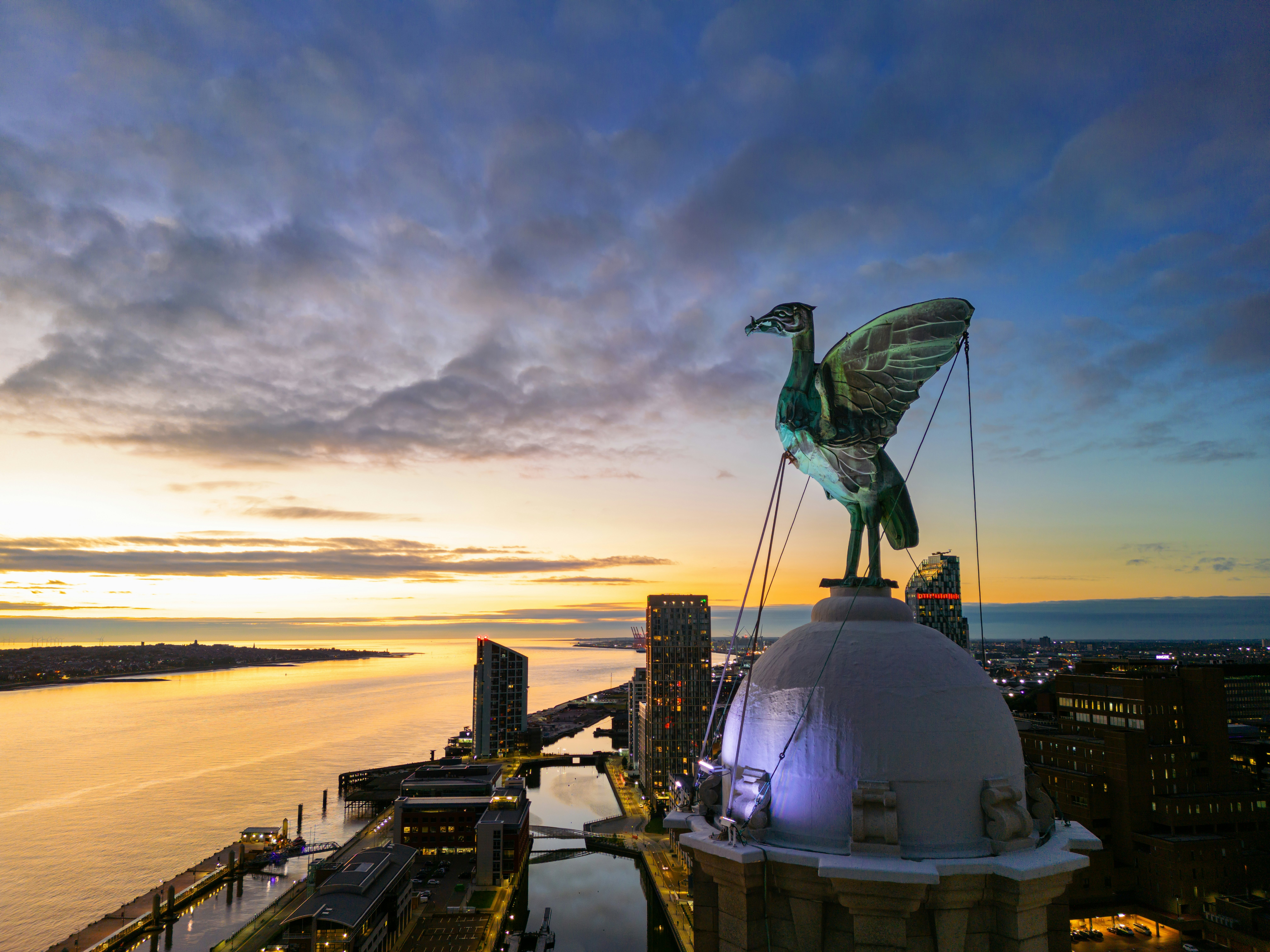
9. View Liverpool from above
To get the measure of the city, take in views from two of the city’s highest and most prominent buildings. Designed by Sir Giles Gilbert (who also designed the red telephone box), the Gothic Revival Liverpool Cathedral is Britain's largest church, perched on top of St James’ Mount. Visitors with a head for heights can climb 217 steps up the cathedral’s tower to take in panoramic views over Liverpool, Merseyside and the Wirral from 110m (361ft) above sea level.
The other must-see view in Liverpool is from the top of the Royal Liver Building (pronounced "lie-ver"). The grandest of the three Edwardian buildings known as the Three Graces, this Liverpool landmark soars to a height of 98m (322ft), and visitors can enjoy beautiful panoramic views of the city from its wind-whipped summit by taking the Royal Liver Building 360 Tour.
Planning tip: If you climb the Royal Liver Building, remember to hold onto your hat – the strong gusts blasting in from the Mersey take no prisoners!
10. Discover history and culture at Liverpool's museums
Rewarding art galleries and museums dot the streets of the city. The neoclassical World Museum is a must for rainy days, with an aquarium, planetarium and exhibits ranging from live bugs to human anthropology. With over 40,000 objects and artifacts collected by Liverpool’s merchants and explorers, the World Cultures Gallery shows the city’s cultural links to West Africa, East Asia and the Americas.
The most extensive art collection in England outside of London is found at the Walker Art Gallery, just a short walk from the World Museum. With collections stretching back to the 13th century, expect to see paintings by the likes of Rembrandt, Monet and Turner, alongside neoclassical marble sculptures dating from the late 18th century.
For a more contemporary take, the Museum of Liverpool chronicles the social and community history of this strong and resilient city. Some of the best exhibits share stories of real Liverpudlians and their memories of events over the past two centuries, from the tough times of the Blitz to their passion for the local football teams and The Beatles.
Planning tip: For contemporary art, visit the Tate Liverpool, temporarily housed at the RIBA North premises on Mann Island while the gallery's Royal Albert Dock home is under renovation.
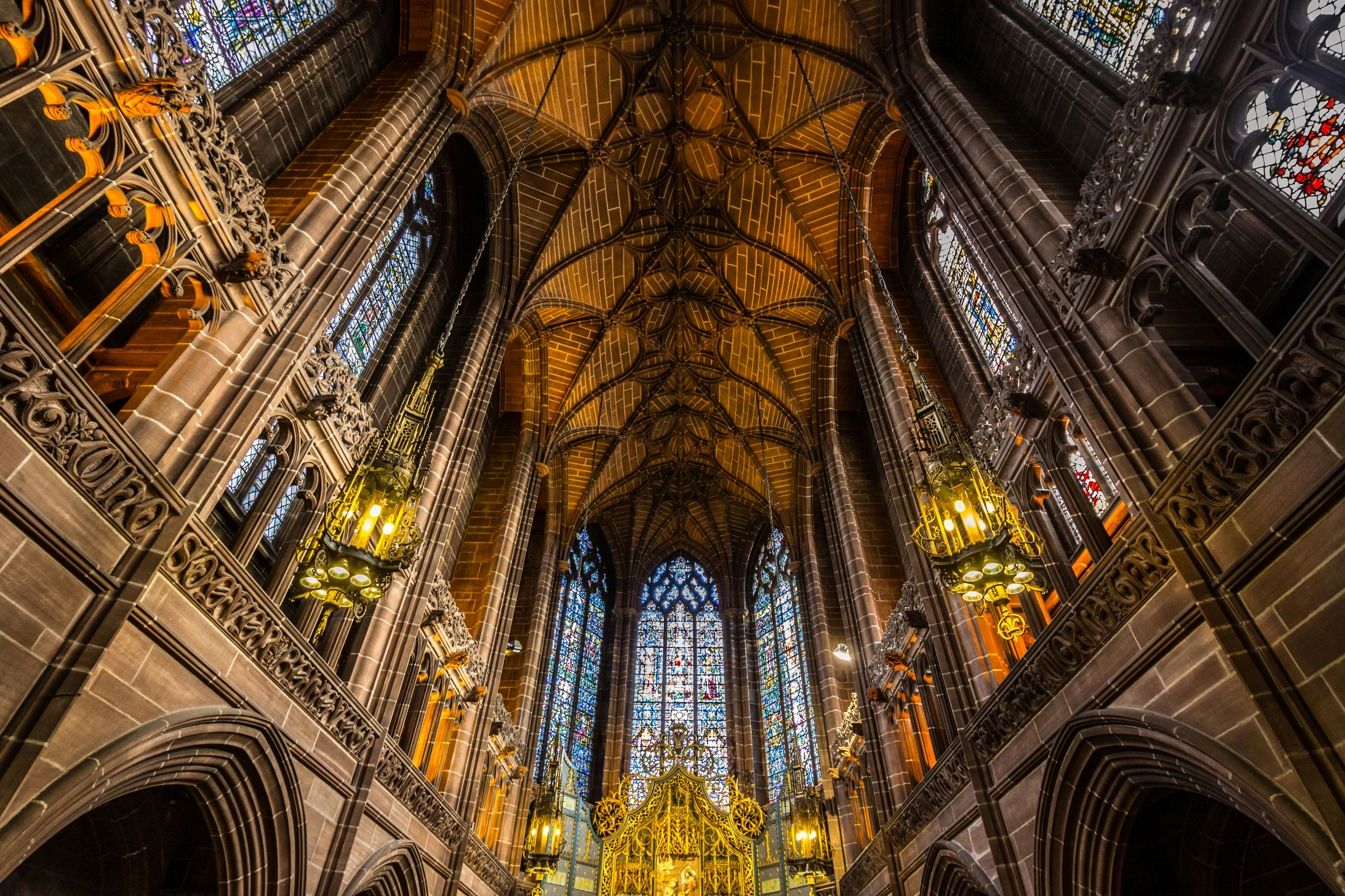
11. Visit Liverpool's characterful neighborhoods
You haven't seen Liverpool till you've explored its historic and up-and-coming neighborhoods. Start with a meander through the Georgian Quarter, just southeast of the center, with its handsome streets flanked by grand three-story houses sitting in the shadow of the cavernous Liverpool Cathedral.
The area was built in the early 19th century for the city’s growing wealthy class and while it fell into dereliction in the 20th century, it’s been revived into one of Liverpool’s prettiest neighborhoods. After exploring the cathedral, stroll past houses with characteristically multicolored doors that could have been imported from Dublin, Liverpool's not-so-distant neighbor across the Irish Sea.
There are also some fantastic pubs in this neighborhood, such as The Grapes, a splendid cornerside spot with a fine craft beer selection, while the art deco Philharmonic Hall hosts regular music, theater and stand-up comedy.
For a change of mood, explore Liverpool's alternative side in the Ropewalks district. One of the city’s most colorful streets, Bold St is stuffed with quirky independent boutiques and topped off by the bizarre roofless "Bombed-Out Church" – the Georgian-era Church of St Luke, whose interior was flattened during the Blitz in 1941.
Don’t miss News From Nowhere, a not-for-profit community bookshop whose shelves have brimmed with the finest in radical and alternative literature since 1974. Check out vintage gladrags at COW or find clothes that make a LGBTIQ+ statement at Grin. Finally, climb upstairs past the gig posters at Soho’s and lose yourself in a warren of vintage jackets and classic vinyl records.
12. Soak up the fresh air in Liverpool's green spaces
For a big metropolis, Liverpool is blessed with more than its fair share of parks to relax in. On a warm day, block out some time to enjoy the city's green spaces. Set between Toxteth and Aigburth, Sefton Park boasts the Grade II–listed Palm House, plus bronze and marble statues of great explorers of the natural world.
Another much-loved local space is Stanley Park – a vast Victorian expanse of green that famously separates Liverpool Football Club’s Anfield stadium from Everton Football Club's Goodison Park stadium. Not far away in Everton, Everton Park boasts some of the finest views of Liverpool’s skyline from the top of its steps.
The serene ornamental spaces of the Festival Gardens lie 2 miles (3.2km) south of the city center, dotted with pagodas, lakes and waterfalls. Further east, pretty, landscaped Calderstones Park is home to six Neolithic sandstone boulders, said to be older than Stonehenge, pre-dating the city by four millennia.
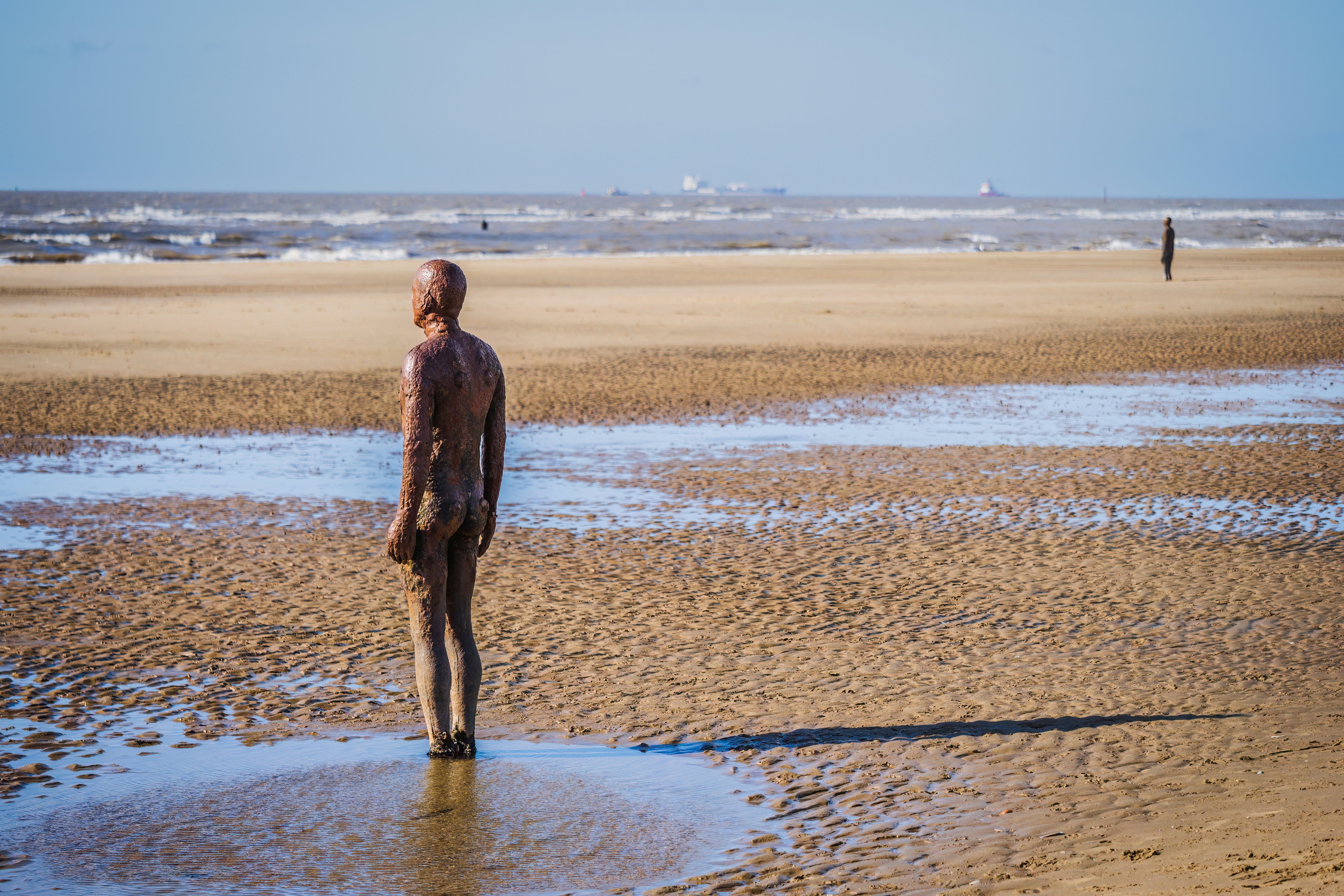
13. See Antony Gormley's moody sculptures at Crosby Beach
Just 20 minutes north of central Liverpool on the Merseyrail train, Crosby Beach is a rewarding place to escape from Liverpool's big city bustle. The beach is a vast expanse of golden sand populated by only the occasional dog walker, and it's the dream-like setting for one of Merseyside's most famous artworks.
Another Place is a series of 100 cast-iron sculptures of standing human figures, scattered along the 1.5 miles (2.4km) of shoreline at Crosby Beach, created by renowned artist Antony Gormley. Sinking into the rising tides, these ghostly sentinels bring to mind the dead condemned to wander the shores of the river dividing the living world from the Underworld in ancient Greek myth.
Planning tip: Try to visit close to sunset at low tide, when you can gaze out from the promenade and see Gormley's figures silhouetted against the golden-hour sky.
This article was adapted from Lonely Planet’s England guidebooks, published in June 2025.




